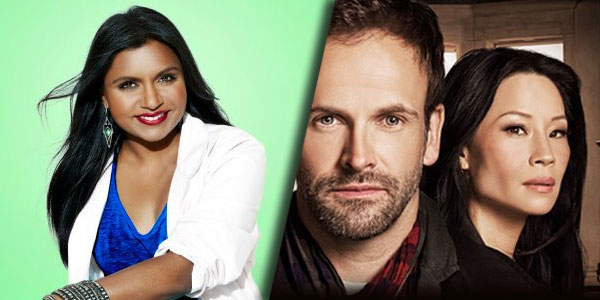
By Jenny An
I initially cringed upon hearing that the two Asian lady leads premiering on network TV this year were a doctor and a former doctor. While Sandra Oh on Grey’s Anatomy provided that an Asian doctor could certainly have depth, it still felt a little too adherent to the Asian and Nerdy stereotype for comfort.
But Lucy Liu as Joan Watson on Elementary, and Mindy Kaling as Mindy Lahiri on The Mindy Project refreshingly seemed like real human beings, albeit exaggerated for the 60 or 30-minutes of rollicking fun television is supposed to provide. They’re characters who are competent at their jobs (most of the time) and also have lives outside of work and men.
Asian characters can be studious, sexually promiscuous (applicable only to women via the Dragon Lady trope), or just really into Pinkberry without being a stereotype. So what makes a stereotype, and what makes a character?
In the footsteps of the Bechdel Test for women in media, a proposed test of whether a character is a racial stereotype or a character:
1. Has a first name
Americans tend to refer to each other by their first names, even their bosses. It’s a quick indicator that it’s a friendly person, and not a plot device. Chang or Senor Chang on Community, you’re getting called out.
2. Speaks with people of other races and genders
Being able to speak to people of other backgrounds is a quality indicator of that whole being a mostly-normal, functional human thing. When Rajesh Koothrappali on The Big Bang Theory is so terrified of speaking to women that he is reduced to using a hand-puppet at the doctor’s office because his doctor is a woman, all stereotype bells go off.
3. Is shown doing something unrelated to work
Real people have lives outside the workplace, or the school play. They don’t only worry about their careers and they leave the office, no matter how much of a workaholic they are or how attractive the other people in their workplace are. The character Nelly Yuki of Gossip Girl so desperately wants to be more than a plot point but alas, that still hasn’t happened yet.
Bonus points: Acknowledges that they are not white
I don’t know a single Asian American who hasn’t been asked regularly, “Where are you from?” and the expected answer is not “The Midwest.” Race exists in America. White is still the norm in media. And when Mindy Kaling’s character jokes after having her nose broken, “My looks are very important to me and unfortunately we live in a society where we prize white women with perfect noses and I’m 0-for-2,” that sounds a lot like acknowledging this reality and hopefully a step toward progress in which she shouldn’t be 0-for-2. It sounds a lot like she’s an Asian American character, not just an Asian American actor cast as a generic (read: white) character.
ABOUT THE AUTHOR: Jenny An writes about the arts, food, travel and technology. She lives in Brooklyn with a MacBook that is like a pet.







